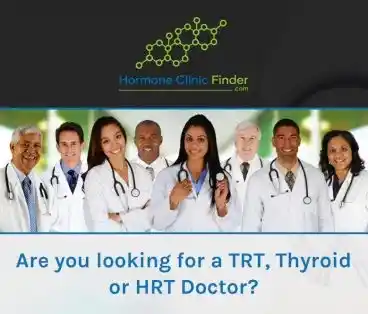Oral Minoxidil for Hair Loss: A Review in Plain Language
By Dr. Jay D. Modha and Dr. Yashdeep Singh Pathania
Summary
Minoxidil, once a blood pressure medication, is now helping many people grow back their hair—especially when taken in small doses by mouth (oral minoxidil). This article looks at how oral minoxidil is being used for different types of hair loss and whether it’s safe and effective.
What Is Minoxidil and How Did It Start?
Minoxidil was originally developed to treat high blood pressure. However, doctors noticed that patients taking it began growing more hair. That unexpected benefit led to the creation of topical minoxidil, first approved by the FDA in 1988 for male pattern baldness. Over time, new versions appeared—foams, lotions, and stronger concentrations. But applying minoxidil to the scalp every day can be messy, time-consuming, and not always effective.
This is where oral minoxidil comes in. Recently, doctors have started prescribing low doses of it by mouth to treat various types of hair loss—offering hope to people who didn’t respond well to the topical versions.

How Does Minoxidil Work?
Scientists don’t fully understand how minoxidil regrows hair, but here’s what we know:
Types of Hair Loss Treated with Oral Minoxidil
1. Female Pattern Hair Loss (FPHL)
Women with genetic hair thinning (often at the part line) have seen good results with low-dose oral minoxidil, especially when topical options didn’t help or caused irritation.
2. Male Pattern Baldness (Androgenetic Alopecia)
Men experiencing classic pattern baldness have responded well to oral minoxidil, particularly those who didn’t benefit from or couldn’t tolerate finasteride or topical minoxidil.
3. Traction Alopecia
Hair loss caused by tight hairstyles may be improved with oral minoxidil, although more studies are needed.
4. Chronic Telogen Effluvium
People with long-term, diffuse hair shedding can sometimes benefit from oral minoxidil, as it helps keep more hairs in the growing phase.
5. Hair Shaft Disorders
In diseases that damage hair follicles permanently, oral minoxidil may help preserve remaining hair, but it’s not a cure.
7. Alopecia Areata
An autoimmune condition that causes patchy hair loss. Some people have reported improvement with oral minoxidil, especially when combined with other treatments.
8. Chemotherapy-Induced Hair Loss
Although research is early, minoxidil may reduce the severity of hair loss during chemo or help hair grow back faster afterward.
Is Oral Minoxidil Safe?
Yes, in low doses, oral minoxidil is generally safe and well tolerated. Here's what patients and doctors have observed:
A New Option: Sublingual Minoxidil
Some researchers have tried sublingual minoxidil (placed under the tongue). This may:
Final Thoughts
Hair loss affects not just appearance but also confidence and mental well-being. Oral minoxidil, taken at low doses, is showing strong potential as a simple, affordable, and effective treatment option for many types of hair loss. While it isn’t FDA-approved for this use yet, many dermatologists are using it “off-label” with good results.
More long-term studies are needed, but the future of oral minoxidil in hair restoration looks very promising.

1 | INTRODUCTION
Many serendipitous discoveries led to the current popular FDA (Food and Drug Administration) approved medicines in the field of trichology.1 Minoxidil is one such compound that was initially used as oral therapy for hypertension. In the year 1988, US FDA first approved 2% topical minoxidil for androgenetic alopecia in males. Since then, many commercialized topical formulations containing various preparations (lotions, foam) and concentrations (2%, 5%, and 10%) of minoxidil have dominated the treatment armamentarium of alopecia. Currently, topical minoxidil and oral finasteride (1 mg) are the only FDA-approved therapies in males while topical minoxidil alone is for females. Although associated with significantly favorable results, topical use has several limitations such as repeated application, vehicle inconsistencies, cosmetic drawbacks, financial burden, and limited percutaneous absorption.2 To overcome these shortcomings, recently oral minoxidil is being used widely for various hair loss disorders.
The mechanism of hair growth by minoxidil is yet to be understood completely. Minoxidil (2,4-diamino-6-piperidinopyrimidine3-oxide) is a potent peripheral vasodilator that acts via an opening of sarcolemmal ATP2-dependent potassium channels causing the release of nitric oxide (NO). This leads to a decrease in the telogen phase duration and an increase in the anagen phase of the hair follicles.3 It leads to the upregulation of VEGF (vascular endothelial growth factors) causing increased oxygen and growth factor delivery to the follicles. It also exerts the immunomodulatory effect by modulating the effects of Concavalin A (an intermediary for activating the T lymphocytes), which can be beneficial in autoimmune alopecia.4 Being a prodrug, it is metabolized by hepatic dehydroepiandrosterone sulfotransferase (SULT2A1) to minoxidil sulfate.2 Also follicular sulfotransferase enzyme SULT1A1 in the outer root sheath of the hair follicle converts it into its active metabolite.
Given its diverse range of actions, minoxidil is used orally with the hope of various alopecia management with an effort to achieve higher clinical efficacy and better compliance. This review aims to consolidate the use of oral minoxidil in various non-scarring and scarring alopecias.
2 FEMALE PATTERN HAIR LOSS (FPHL)
3 ANDROGENETIC ALOPECIA
4 TRACTIONAL ALOPECIA
5 CHRONIC TELOGEN EFFLUVIUM
6 HAIR SHAFT DISORDERS
6.1 Loose Anagen Syndrome
6.2 Monilethrix
7 SCARRING ALOPECIA
8 ALOPECIA AREATA
9 CHEMOTHERAPY-INDUCED ALOPECIA (ANAGEN EFFLUVIUM)
9.1 Safety profile
Overall, oral minoxidil is found to be better tolerated with fewer adverse effects. Hypertrichosis was the most common anticipated side effect seen in 20% of patients. Despite this, hypertrichosis was not the reason for discontinuation of the therapy as most of the patients understood it as mild and quite manageable. It should be emphasized that hypertrichosis was a dose-dependent adverse effect per se; more commonly seen with a 5 mg daily dose (more than 50% of the patients) whereas 0.25 mg per day had the lowest incidence (less than 10% of patients).27 However, pragmatic studies with larger sample sizes and longer follow-ups are needed to draw a conclusion and determine the relationship between dose and hypertrichosis. As topical minoxidil induces fast re-entry in the anagen phase of the TABLE 1 hair follicles, provoking a transitory telogen effluvium (TE); similarly increased hair shedding is seen with oral minoxidil lasting 3–6 weeks. Patients should be properly counseled for this anticipated event to avoid premature termination of the therapy. Sinclair et al.28 described this adverse effect in 22 out of 100 patients, yet due to pretherapy counseling, none discontinued the treatment, as well as this hair shedding, stopped after 4–6 weeks in almost all the patients. Acute contact dermatitis seen with topical minoxidil due to propylene glycol is of common occurrence, so, Therianou et al. reported that 0.25 mg twice daily oral minoxidil is a safe and satisfactory alternative in those patients. Cardiovascular side effects were usually minor in nature. Blood pressure monitoring was done in many of the studies, which indicated relatively minor changes7,8 Ramos et al.7 has described that there was no significant difference in the MBP (mean blood pressure) of oral minoxidil group when compared with those using topical minoxidil; however, increased heart rate by 6.5% was observed with oral minoxidil. Postural hypotension was seen in 2% of the patients which was managed with 50 mg of sodium chloride daily as reported by Sinclair et al.6 Pedal edema was reported in 3% of patients, which was more common with 5 mg daily dose. Changes in electrocardiogram were seen in approximately 1% of patients, it was mild in nature and consisted of tachycardia, PVC, and T wave changes in lead 1. However, this was recorded in one study only and other studies did not regularly involve EKG monitoring.29 No severe cardiopulmonary events were found in any of the studies.
Newer pharmacokinetic studies regarding minoxidil (oral/ topical) metabolism revealed that intersubjective variability in the activity of sulfotransferase in hepatic (SULT2A1) and follicular (SULT1A1) ultimately yields lower hair regrowth.30 Weak hair growth due to low follicular SULT1A1 cannot be overcome with ML due to low solubility and saturation absorption kinetics but it can be overcome with OM through dose escalation. Sublingual doses of 0.45 and 0.90 mg minoxidil were evaluated by Sinclair et al.31 as the sublingual route bypasses hepatic first-pass metabolism, sublingual minoxidil could be used to increase follicular minoxidil sulfate bioavailability and thus hair growth. As hepatic sulphation of minoxidil enhances the hemodynamic effect, sublingual minoxidil would decrease the hemodynamic adverse effects and consequently improve the safety profile.
By Dr. Jay D. Modha and Dr. Yashdeep Singh Pathania
Summary
Minoxidil, once a blood pressure medication, is now helping many people grow back their hair—especially when taken in small doses by mouth (oral minoxidil). This article looks at how oral minoxidil is being used for different types of hair loss and whether it’s safe and effective.
Minoxidil was originally developed to treat high blood pressure. However, doctors noticed that patients taking it began growing more hair. That unexpected benefit led to the creation of topical minoxidil, first approved by the FDA in 1988 for male pattern baldness. Over time, new versions appeared—foams, lotions, and stronger concentrations. But applying minoxidil to the scalp every day can be messy, time-consuming, and not always effective.
This is where oral minoxidil comes in. Recently, doctors have started prescribing low doses of it by mouth to treat various types of hair loss—offering hope to people who didn’t respond well to the topical versions.
Scientists don’t fully understand how minoxidil regrows hair, but here’s what we know:
- It helps open up blood vessels around hair follicles, increasing blood flow and nutrients.
- It speeds up the growth phase of hair (called the anagen phase) and shortens the resting phase (telogen phase).
- It may help modulate immune responses, which is useful in types of hair loss related to autoimmune problems like alopecia areata.
- Minoxidil must be activated in the body by enzymes in the liver and in hair follicles to work effectively. Some people’s bodies naturally activate it better than others.
1. Female Pattern Hair Loss (FPHL)
Women with genetic hair thinning (often at the part line) have seen good results with low-dose oral minoxidil, especially when topical options didn’t help or caused irritation.
2. Male Pattern Baldness (Androgenetic Alopecia)
Men experiencing classic pattern baldness have responded well to oral minoxidil, particularly those who didn’t benefit from or couldn’t tolerate finasteride or topical minoxidil.
3. Traction Alopecia
Hair loss caused by tight hairstyles may be improved with oral minoxidil, although more studies are needed.
4. Chronic Telogen Effluvium
People with long-term, diffuse hair shedding can sometimes benefit from oral minoxidil, as it helps keep more hairs in the growing phase.
5. Hair Shaft Disorders
- Loose Anagen Syndrome and Monilethrix (rare conditions affecting hair structure) have shown some improvement in small case reports using oral minoxidil.
In diseases that damage hair follicles permanently, oral minoxidil may help preserve remaining hair, but it’s not a cure.
7. Alopecia Areata
An autoimmune condition that causes patchy hair loss. Some people have reported improvement with oral minoxidil, especially when combined with other treatments.
8. Chemotherapy-Induced Hair Loss
Although research is early, minoxidil may reduce the severity of hair loss during chemo or help hair grow back faster afterward.
Yes, in low doses, oral minoxidil is generally safe and well tolerated. Here's what patients and doctors have observed:
- Unwanted hair growth (hypertrichosis) is the most common side effect, especially on the face or body. It depends on the dose:
- 5 mg/day: Affects over 50% of users
- 0.25 mg/day: Affects less than 10%
- Temporary hair shedding may occur in the first few weeks (3–6 weeks) as hair follicles shift into a new growth cycle. This usually resolves on its own.
- Skin irritation, common with topical minoxidil due to added chemicals like propylene glycol, is avoided entirely with oral forms.
- Heart-related side effects are rare and usually mild:
- A small increase in heart rate (around 6.5%)
- Slight drop in blood pressure or lightheadedness in a few people (2%)
- Swelling in the feet (edema) occurred in about 3% of cases
- Minor changes in EKG (1% of patients in one study) but without serious consequences
Some researchers have tried sublingual minoxidil (placed under the tongue). This may:
- Bypass the liver and deliver the drug more directly to the hair follicles
- Reduce cardiovascular side effects
- Offer a promising alternative for people who don’t respond well to oral or topical forms
Hair loss affects not just appearance but also confidence and mental well-being. Oral minoxidil, taken at low doses, is showing strong potential as a simple, affordable, and effective treatment option for many types of hair loss. While it isn’t FDA-approved for this use yet, many dermatologists are using it “off-label” with good results.
More long-term studies are needed, but the future of oral minoxidil in hair restoration looks very promising.
1 | INTRODUCTION
Many serendipitous discoveries led to the current popular FDA (Food and Drug Administration) approved medicines in the field of trichology.1 Minoxidil is one such compound that was initially used as oral therapy for hypertension. In the year 1988, US FDA first approved 2% topical minoxidil for androgenetic alopecia in males. Since then, many commercialized topical formulations containing various preparations (lotions, foam) and concentrations (2%, 5%, and 10%) of minoxidil have dominated the treatment armamentarium of alopecia. Currently, topical minoxidil and oral finasteride (1 mg) are the only FDA-approved therapies in males while topical minoxidil alone is for females. Although associated with significantly favorable results, topical use has several limitations such as repeated application, vehicle inconsistencies, cosmetic drawbacks, financial burden, and limited percutaneous absorption.2 To overcome these shortcomings, recently oral minoxidil is being used widely for various hair loss disorders.
The mechanism of hair growth by minoxidil is yet to be understood completely. Minoxidil (2,4-diamino-6-piperidinopyrimidine3-oxide) is a potent peripheral vasodilator that acts via an opening of sarcolemmal ATP2-dependent potassium channels causing the release of nitric oxide (NO). This leads to a decrease in the telogen phase duration and an increase in the anagen phase of the hair follicles.3 It leads to the upregulation of VEGF (vascular endothelial growth factors) causing increased oxygen and growth factor delivery to the follicles. It also exerts the immunomodulatory effect by modulating the effects of Concavalin A (an intermediary for activating the T lymphocytes), which can be beneficial in autoimmune alopecia.4 Being a prodrug, it is metabolized by hepatic dehydroepiandrosterone sulfotransferase (SULT2A1) to minoxidil sulfate.2 Also follicular sulfotransferase enzyme SULT1A1 in the outer root sheath of the hair follicle converts it into its active metabolite.
Given its diverse range of actions, minoxidil is used orally with the hope of various alopecia management with an effort to achieve higher clinical efficacy and better compliance. This review aims to consolidate the use of oral minoxidil in various non-scarring and scarring alopecias.
2 FEMALE PATTERN HAIR LOSS (FPHL)
3 ANDROGENETIC ALOPECIA
4 TRACTIONAL ALOPECIA
5 CHRONIC TELOGEN EFFLUVIUM
6 HAIR SHAFT DISORDERS
6.1 Loose Anagen Syndrome
6.2 Monilethrix
7 SCARRING ALOPECIA
8 ALOPECIA AREATA
9 CHEMOTHERAPY-INDUCED ALOPECIA (ANAGEN EFFLUVIUM)
9.1 Safety profile
Overall, oral minoxidil is found to be better tolerated with fewer adverse effects. Hypertrichosis was the most common anticipated side effect seen in 20% of patients. Despite this, hypertrichosis was not the reason for discontinuation of the therapy as most of the patients understood it as mild and quite manageable. It should be emphasized that hypertrichosis was a dose-dependent adverse effect per se; more commonly seen with a 5 mg daily dose (more than 50% of the patients) whereas 0.25 mg per day had the lowest incidence (less than 10% of patients).27 However, pragmatic studies with larger sample sizes and longer follow-ups are needed to draw a conclusion and determine the relationship between dose and hypertrichosis. As topical minoxidil induces fast re-entry in the anagen phase of the TABLE 1 hair follicles, provoking a transitory telogen effluvium (TE); similarly increased hair shedding is seen with oral minoxidil lasting 3–6 weeks. Patients should be properly counseled for this anticipated event to avoid premature termination of the therapy. Sinclair et al.28 described this adverse effect in 22 out of 100 patients, yet due to pretherapy counseling, none discontinued the treatment, as well as this hair shedding, stopped after 4–6 weeks in almost all the patients. Acute contact dermatitis seen with topical minoxidil due to propylene glycol is of common occurrence, so, Therianou et al. reported that 0.25 mg twice daily oral minoxidil is a safe and satisfactory alternative in those patients. Cardiovascular side effects were usually minor in nature. Blood pressure monitoring was done in many of the studies, which indicated relatively minor changes7,8 Ramos et al.7 has described that there was no significant difference in the MBP (mean blood pressure) of oral minoxidil group when compared with those using topical minoxidil; however, increased heart rate by 6.5% was observed with oral minoxidil. Postural hypotension was seen in 2% of the patients which was managed with 50 mg of sodium chloride daily as reported by Sinclair et al.6 Pedal edema was reported in 3% of patients, which was more common with 5 mg daily dose. Changes in electrocardiogram were seen in approximately 1% of patients, it was mild in nature and consisted of tachycardia, PVC, and T wave changes in lead 1. However, this was recorded in one study only and other studies did not regularly involve EKG monitoring.29 No severe cardiopulmonary events were found in any of the studies.
Newer pharmacokinetic studies regarding minoxidil (oral/ topical) metabolism revealed that intersubjective variability in the activity of sulfotransferase in hepatic (SULT2A1) and follicular (SULT1A1) ultimately yields lower hair regrowth.30 Weak hair growth due to low follicular SULT1A1 cannot be overcome with ML due to low solubility and saturation absorption kinetics but it can be overcome with OM through dose escalation. Sublingual doses of 0.45 and 0.90 mg minoxidil were evaluated by Sinclair et al.31 as the sublingual route bypasses hepatic first-pass metabolism, sublingual minoxidil could be used to increase follicular minoxidil sulfate bioavailability and thus hair growth. As hepatic sulphation of minoxidil enhances the hemodynamic effect, sublingual minoxidil would decrease the hemodynamic adverse effects and consequently improve the safety profile.
Last edited by a moderator:













